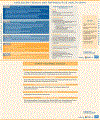The Teen Access and Quality Initiative: Improving Adolescent Reproductive Health Best Practices in Publicly Funded Health Centers
- PMID: 31820301
- PMCID: PMC11008673
- DOI: 10.1007/s10900-019-00781-z
The Teen Access and Quality Initiative: Improving Adolescent Reproductive Health Best Practices in Publicly Funded Health Centers
Abstract
Quality adolescent sexual and reproductive health (ASRH) services play an important role in supporting the overall health and well-being of adolescents. Improving access to this care can help reduce unintended pregnancies, sexually transmitted diseases (STDs), and human immunodeficiency virus (HIV) infection and their associated consequences, as well as promote health equity. The Centers for Disease Control and Prevention funded three grantees to implement a clinic-based ASRH quality improvement initiative complimented by activities to strengthen systems to refer and link youth to ASRH services. The purpose of this study is to describe the initiative and baseline assessment results of ASRH best practice implementation in participating health centers. The assessment found common use of the following practices: STD/HIV screening, education on abstinence and the use of dual protection, and activities to increase accessibility (e.g., offering after-school hours and walk-in and same-day appointments). The following practices were used less frequently: provider training for Long-Acting Reversible Contraception (LARC) insertion and removal, LARC availability, same-day provision of all contraceptive methods, and consistent sharing of information about confidentiality and minors' rights with adolescent clients. This study describes the types of training and technical assistance being implemented at each health center and discusses implications for future programming.
Keywords: Adolescent health; Community health center; Quality improvement; Reproductive health; Teen pregnancy.
Conflict of interest statement
Figures
References
-
- Martin J, Hamilton B, & Osterman M. (2019). Births in the United States, 2018. NCHS Data Brief, No. 346. https://www.cdc.gov/nchs/products/databriefs/db346.htm. - PubMed
-
- Boonstra HD (2011). Teen pregnancy among young women in foster care: A primer. Guttmacher Policy Review, 14(2), 8–19.
-
- Hoffman S. (2008). Kids having kids: Economic costs and social consequences of teen pregnancy. Washington, DC: The Urban Institute Press.
Publication types
MeSH terms
Grants and funding
LinkOut - more resources
Full Text Sources
Medical
Research Materials


